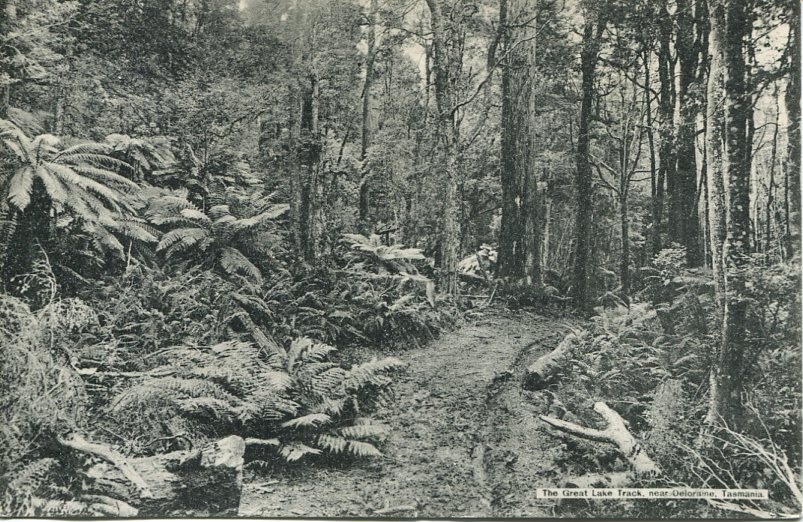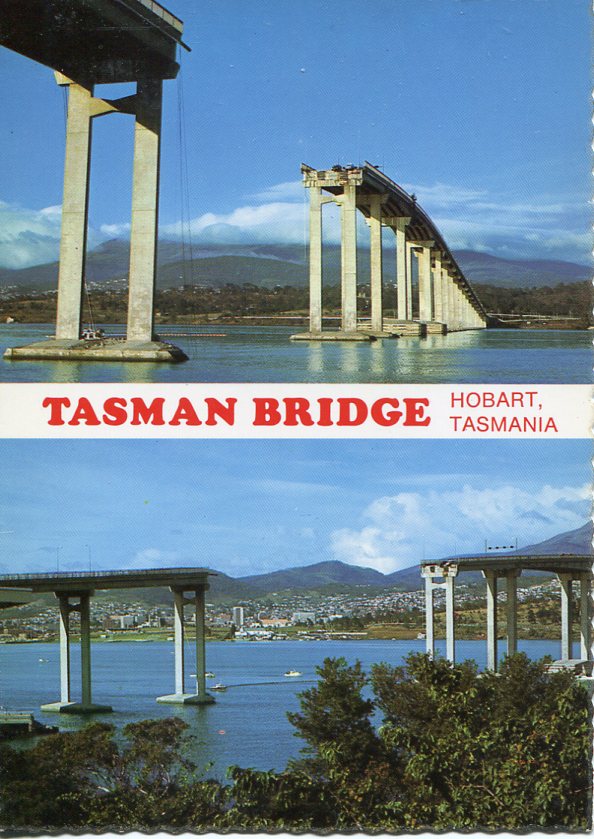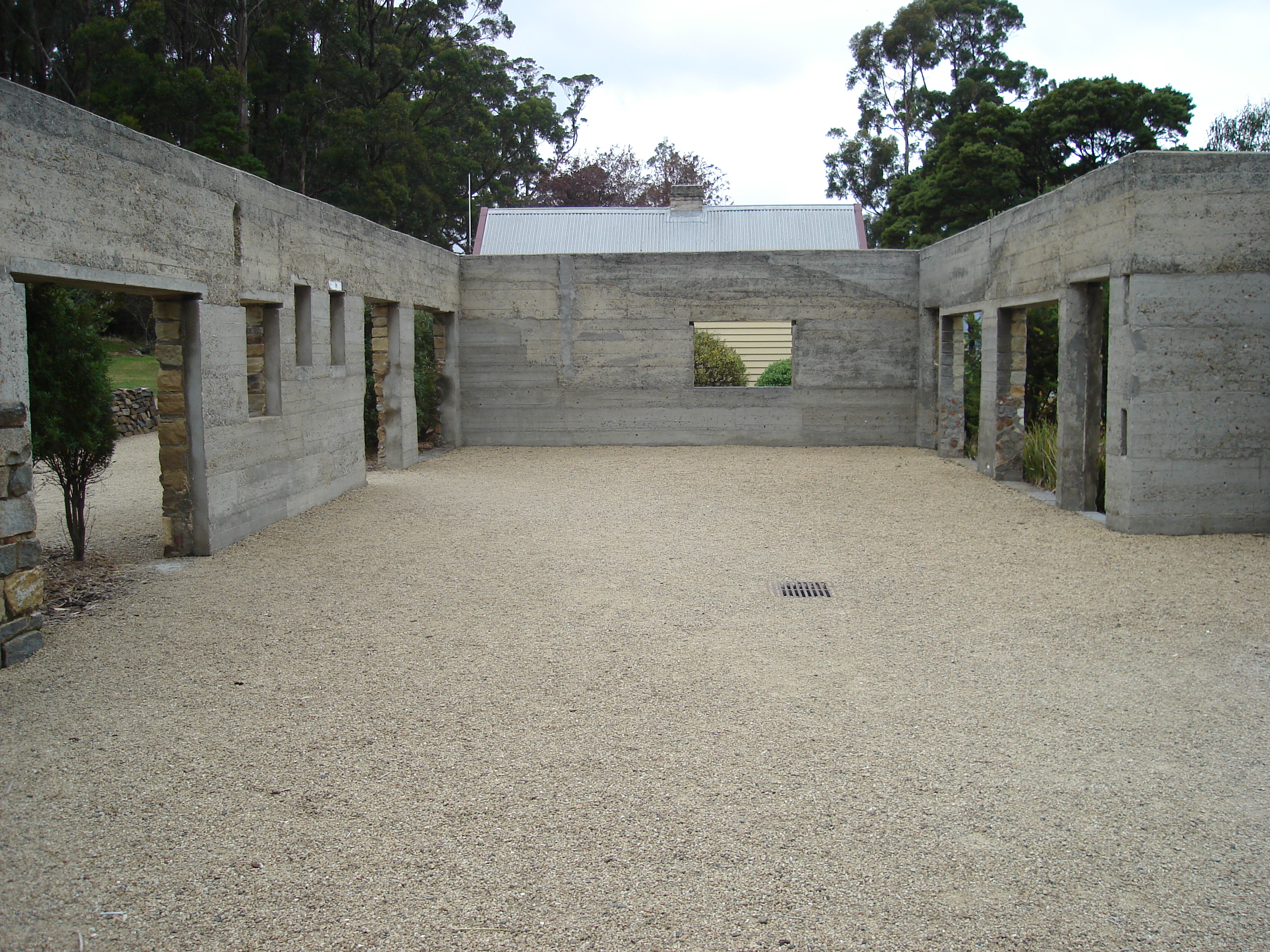AustLit
-
Since the late 1980s the islescape of Tasmanian Gothic has become so ubiquitous that it now has a Wikipedia entry and a YouTube channel. This may appear a shallow and recent version of Tasmania but actually it runs much deeper than the discursive fiction of Little England, which was always a late, settler addition to the palimpsest of Tasmanian culture.
The name of this set of tropes has its source in Jim Davidson’s Meanjin article ‘Tasmanian Gothic’ of 1989 (48.2, pp. 307-24). Its historical foundation was also laid down in the late 1980s in the powerful perspectives and style of Robert Hughes’s The Fatal Shore: A History of the Transportation of Convicts to Australia, 1787-1868(1986), with its epigraph from Dante’s Inferno, while the palette of its imagery was established with Roger Scholes’s film of 1988 The Tale of Ruby Rose. The mythemes of the Tasmanian Gothic revival were always there, as Patrick White’s cultural antennae sensed more than a decade earlier. In his 1976 obituary for Cynthia Nolan (née Reed), White referred to her unhappy Tasmanian childhood at the country estate of Mount Pleasant, near Prospect, ‘surrounded by what one sees as conventional Tasmanian Gothic gloom.’ White’s version of Nolan’s Tasmanian childhood is a good example of the propensity for the Gothic mode to distort perception and memory. By contrast, in Nolan’s own novel about her childhood in northern Tasmania, Daddy Sowed a Wind (1947) where Mount Pleasant appears as ‘Worthness,’ the mood and tone is of a Glover painting:
Over the countryside hung a deep haze of warmth and well-being; it was summer at Worthness […] along the creeks and rivers the willows and poplars were yellow leaved. The rich black earth of recently ploughed paddocks showed next to late harvests of pale oats, and bright haystacks stood out upon the slopes of rounded hills. (62-3) (see also Haynes 219)
At the same time, landscapes change and decay, and White’s visit to Mount Pleasant in the 1970s is what probably influenced his version of Nolan’s childhood.
-
For Davidson the Gothic is a ‘synthesising vision […] since it can accommodate disjunctions between past and present,’ (310). So for example, Marcus Clarke’s description of the appearance of the coastline as like ‘melted lead spilt into water,’ is translated into Gothic mode: ‘an uncommonly picturesque [landscape], of crags [and] a myriad of sudden lakes, or the wonderfully overwrought coast of Tasman Peninsula, with its clefts and pavements and blowholes located exactly where a gothic novelist would want them’ (310). An early designation of the south-west county of the island as Transylvania becomes proleptically gothic, merely by chance. The English Catholic architect Augustus Pugin thought his church designs for Hobart would allow his missionising friend Bishop Willson to build a neo-Gothic Jerusalem in Tasmania, whereas the valency of his pristine English Gothic would be switched to antipodean darkness (see Peter Timms, ‘Assuming the Mantle: Lady Franklin’s heirs and successors’ and Andrews, Creating a Gothic Paradise). Hal Porter’s version of the Thomas Griffith Wainewright story, The Tilted Cross (1961), is a novel that inverts ‘Hobart Town as an extension […] of Regency England’ (Davidson 308). Porter’s memoir of his time in Hobart, The Paper Chase (1973), includes one of the early versions of a re-imagined Gothic Tasmania in the scenes of Porter’s first fright-night in Tasmania, at the Astor Private Hotel, in the 1950s:
I am on an aggrieved island, that the water gobbling in the roof-gutters, and pouring off the asphalted roof can never wash away some taint of plague sensed everywhere. There has been a hell here to which Hell is a crèche. I tell myself again that I am the victim of fatigue, irritating weather, and a mish-mash of impressions – the end-of-the-world precipices; a city momentarily like a setting for Jack the Ripper; grisly convict tales of cannibalism, sodomy and the triangle; the Australian legend that Tasmania is an island of incest and haunted architectural follies; and the sailors’ stories heard years ago in Madame’s Williamstown Wine Depot that Hobart is one of the most immoral ports in the world. (196)
‘Mad Dad’s' interest in Aboriginal ‘antiquities’ in the brightly coloured children’s world of Nan Chauncy’s They Found a Cave suddenly looks dubious. Martin Ball reads Peter Sculthorpe’s late return to Tasmanian themes in his String Quartet No. 14 in relation to the Quamby Bluff massacre (Ball 118). Fly-drive island excursions turn into dark tourism. Thus versions of the gothic have infiltrated every corner of the language of Tasmanian cultural, tourist and historical reference, even providing topics for Ph.D research.
-
Just about anything Tasmanian can be Gothic: the landscape – Hells Gates, Cape Pillar, Dismal Swamp, Cape Grim, Fury Gorge and Mount Horror all suggest a Gothic toponymy, places named for their secrets and hidden histories; the history of flagellation, sodomy and cannibalism; the ‘feudal’ social remnants; the genetic devolution and loss of material culture; degenerate folk art (Tasmanian Grotesque); the haunting psychoses of a genocidal history; the fauna – especially the extinct tiger; decaying colonial buildings, infused with convict labour, but also ruined mansions and ghost towns (Judy Tierney and Bob Casey, Fonthill: a true story of love, luck, murder and scandal, 2015); the scary megafauna and ducking-box in the Hobart Museum; the horizontal scrub, or bauera, of the remote south-west – even the weather. Excess, intricacy, threat, haunting, darkness, eruptive trauma, uncanniness. Contemporary art museums and festivals, like MONA and Dark Mofo, in their épater of the comfortable boundaries of aesthetic taste and the bourgeois museum/gallery experience, draw on and revel in Gothic mythemes (see Emily Bullock, ‘Something in the Dark: The Tale of Ruby Rose and the Tasmanian Gothic,’ Metro Magazine, 182, Spring 2014, pp. 85-91 and Rumblings from Australia's Deep South : Tasmanian Gothic On-Screen’ Studies in Australasian Cinema 5.1 [2011]: 71-80).
David Walsh, the gambler and gallery visionary who created MONA, seems to reflect Tasmanian Gothic in the design and contents of his gallery, a dark wunderkammer with at least some of its provenance in his formative childhood wandering in the Tasmanian Museum and Art Gallery (see Walsh, A Bone of Fact and Flanagan, ‘At Home with David Walsh, the Gambler’).
The blight and darkness that pervade the Central Highlands landscape and the lives of Roger Scholes’s Depression-era characters in The Tale of Ruby Rose has thoroughly suffused subsequent films set in Tasmania like The Last Confession of Alexander Pearce and Dying Breed (both 2008), Van Diemen's Land (2009), The Hunter (2011), Heidi Lee Douglas’s Little Lamb (2014) and a host of amateur efforts, including mythumentaries like ‘Homo Tasmanicus,’ on YouTube’s dedicated ‘Tasmanian Gothic’ channel (see Bullock 91). Even the sunny fishing village of Kettering has been inflected, in the eight-part tv mini-series 'The Kettering Incident' (2016) into Tasmania's Twin Peaks.
-
https://www.youtube.com/embed/Pnn4DliLLdA?list=PL7F19670C32837312
-
Literary fiction and poetry have adapted to the Gothic virus – sometimes working with it, as in Tom Gilling’s historical fiction The Sooterkin (1999); in a popular romance like Candice Proctor’s Whispers of Heaven (2001) where there is a shadow over Tasmania; in updates of the mode in Chloe Hooper’s Tasman Peninsula horror story, A Child's Book of True Crime (2002); or in therapeutic drama like Tom Holloway’s Beyond the Neck (2007) – sometimes struggling to overcome it. Visual artists, like Elizabeth Barsham, as well as many film-makers see in the ‘doom and decay’ of the Gothic, possibilities for expression that writers tend to resist or critique (Lohrey 89). Perhaps this is because the writers are conscious of the constitutive role of repression in the modes of Gothic fiction. Whatever: the ubiquitous spread of the Gothic, Davidson argued, has turned Tasmania into ‘our very own little gothic repository,’ an island storehouse of liberated rather than repressed myths, tropes, stereotypes, jokes, clichés and distortions. A cabinet of insular curiosities. A place to transport, store and forget, the worst – primarily the worst of history. An Australian dungeon. Somehow the islandness of Tasmania enhances its power to embody this gothic mode (310). Peter Conrad has pushed the analogy of the island as a kind of container just that bit further, to the edge of reason, likening the place to a solitary confinement cell: ‘Tasmania itself was just such a receptacle, a theatre where reality changed to an inescapable bad dream’ (Down Home 90).
-
Writers like Amanda Lohrey and Richard Flanagan, though, have either been dismissive or severely critical of the spread of Tasmanian Gothic. Early on, in an essay of 1990, Lohrey noticed the outbreak of what she calls the syndrome of the Tasmanian gothic – she’s thinking of this cultural pathology as analogous to Stockholm Syndrome. She reads the traumatic bonding effects of Tasmanian gothic as ‘a tendency in the individuals who construct it to invest nature with their own trauma’ (90). She acknowledges that with its history of convictism and its undomesticated landscape Tasmania always offered ‘potential for gothic readings’ while it was primarily the contours and landscape of the mainland that defeated the myth’s application there (90). Lohrey’s ridicule of the gothic mode is delicious:
In this gloomy and fatalistic scenario the notion of 'society' is minimal and the emphasis is on the lone individual. Its two stock characters are the hero, the Romantic giant of sensibility marooned in a debased outpost of European settlement, and his foil, the inbred half-wit, chained to a tree by day and raping his sister at night. His cousin is the white-trash predator, stalking the ‘roo in the bush at twilight or, better still, poaching deer from the landlords of the Tasmanian Midlands who are popularly supposed to run their estates like feudal gentry. (91)
But Lohrey’s essay is not just an exercise in wit, it turns on the serious point of inserting the political and social into this cultural pathology of Tasmanian history and what is summoned up, by this action, is a ‘counter-reading of history […] that is the utopian narrative,' (92). This kind of rhetorical move in relation to Tasmanian literature is analysed further in the section a 'barren place, and fertile'.
-
For Richard Flanagan, to characterise Tasmania as a ‘Gothic horror land’ is to delimit the complexities of the place, to make it into a caricature or freak show. But thinking of it as Utopia is similarly reductive (‘Interview’). Peter Pierce traces the literary origins of the gothic back to Ann Radcliffe and her six novels, providing background for what he argues is an ‘egregious example of Tasmanian literary exceptionalism’ (1). Pierce’s point is that the ‘gothic,’ in Davidson’s hands, is an obfuscating, never really defined term for analysis of Tasmanian fiction – melodrama, in his view, would be more inclusive and accurate. Andrew McCann is a critic who reads the ‘colonial gothic,’ often Marcus Clarke’s Van Diemen’s Land fiction (His Natural Life, The Mystery of Major Molineux), as a useful term to describe narratives of ‘dark secrets’ or hidden crime of one kind or another, the unreason of colonial invasion and settler violence that can only be figured tortuously (400-01). McCann’s readings of Clarke are particularly interesting in relation to the disruptive, ambivalent relations of a complex literary mode, like the Gothic, with an originary power, to non-literary and popular cultural forms (like 19th-century entertainment and 21st-century cinema), an encounter that seems relevant to the contradictory contemporary circulations of Tasmanian Gothic, not just to colonial fiction. Clarke seems to have come to colonial Australia with a pre-existing attraction to the Gothic: at school, he collaborated with his friend Gerard Manly Hopkins on a story called Prometheus, ‘about a young medical student who animates a lifeless corpse’ (Turcotte 281). Martin Flanagan, in a troubled meditation on the 1996 Bryant massacre at Port Arthur, alludes to the gothic shapes of the Eastern side of the Tasman peninsula as one half of the story. This landscape is one of ‘sudden and abrupt contrasts,’ where on the western side there are ‘serene silver bays which are home to long-necked black swans.’ The dark, gothic side, though, like Bryant, is incomprehensible. Louis Nowra, also preternaturally alert to the doubleness in the Tasmanian Gothic mode and its mythemes brilliantly frames his confronting Gothic drama of a degenerate lost tribe in the south-west wilderness, The Golden Age (1985), with neo-classical scenes from Euripides’s Iphigenia in Taurus, a proscenium stage with Mount Wellington/kunanyi as backdrop. Nowra’s deployment of the conjunction of the gothic and its antithesis, the classical, was perhaps suggested by Lady Jane Franklin’s pet project of a Doric temple, Ancanthe, at the foothills of the ‘brutal, bad tempered eminence’ of Mount Wellington/kunanyi (Conrad, Down Home).
-
For the Tasmanian Aboriginal intellectual Greg Lehman there is every reason to recognise ‘the unsettling gothic thrall’ of Tasmania (‘Tasmanian gothic’ 201). Lehman reads the term gothic as a profound sign of the dark secrets that run deep in Tasmanian history, so deep that they generate, on the surface, half-truths and silence (201). He’s thinking of the war of extermination against his ancestors, the First Tasmanians, presaged by the Risdon Cove massacre of 3 May 1804, in the first year of settlement. These ‘Old People’ only exist now as ‘ghosts of a distant past’ (205). It is no coincidence that Lehman is drawn to Benjamin Duterrau’s epic historical painting of George Augustus Robinson and the Aborigines, titled The Conciliation (c. 1840). The iconography of the painting seems to idealise Robinson as a saviour of the surviving Aboriginal people and naïve readings of the painting have raised it to iconic status as a ‘national picture.’ But Lehman is not convinced. He is aware of the betrayal of the final truce with the Aboriginal people that would have allowed their return to their homelands, negotiated by Robinson with the Oyster Bay and Big River people on 31 December 1831, near Lake Echo. Lehman draws attention in Duterreau’s painting to Truganini’s pleading ‘with her reluctant husband [Wooraddy] to accept the truce’ (209). Lehman suggests a line of influence between Duterrau’s iconography and ‘Milton’s gothic masterpiece Paradise Lost, [its] influence is most notable in Mary Shelley’s Frankenstein, where the creature reads Paradise Lost and suffers at its revelations. Duterrau brought Tasmania under the same dark veil.’ In this analysis, Robinson appears as ‘a tragic hero, alone in the wilderness, miraculously surviving both the rugged landscape and the treacherous Natives,’ a kind of hybrid creature of colonisation and invasion, saintly and treacherous, friend and captor, a Frankenstein’s monster wandering the wastes at the end of the world (210). In this sense, argues Lehman, ‘long before Marcus Clarke’s novel For the Term of His Natural Life (1874), or films such as The Tale of Ruby Rose (1988) or The Hunter (2011), Benjamin Duterrau illustrates the first chapter of Tasmanian Gothic. This story is reiterated with every acknowledgement of Tasmania’s other great tragedies: the thylacine, Lake Pedder, and the ongoing struggle to save its ancient forests’ (211). Lehman, then, understands Tasmanian Gothic at its most authentic and ambivalent, as code for the ‘spectre of genocide.’ And his further insight is that ‘Tasmanians have yet to engage fully with the unspeakable in our history and accept its terrible legacy’ (212).
See also the AustLit entry on Greg Lehman.
-
A casualty of the ubiquity of the Tasmanian Gothic has been the obscuring of the sunny, Georgian uplands of the Tasmanian pastoral. In Oddity and Elegance,Michael Sharland extols the colonial pastoral of:
...mellowed pictures of farm lands, old houses, aged bridges, placid churches, there is the impression of centuries not merely years. Even the green compact turf that covers so much of the links with early settlement concealing tracks and pathways that were once roads, screening the foundations to long-forgotten homes, seems ages old as though in fact it had been with us always. (69)
A similar aesthetic is at work in the vernacular early settler shelters and colonial buildings lovingly recorded in Frank Bolt’s black-and-white heritage photography in Vanishing Tasmania: a photographic essay (1992). Instead of the febrile, rapid-eye mode of the Gothic, here we have continuity, a slowly evident impermanence and the softness of light. Sharland’s palimpsestic Tasmania is illustrated by the Palladian sublime of Panshanger (Longford), Clarendon (Nile), Woolmers (Longford), Brickenden (Longford), Beaufront (Ross), Quamby House (Hagley), Runnymede (New Town) and Entally (Hadspen), the Greek Revival of Ancanthe and St. Andrew’s Evandale, Elizabeth Hudspeth’s paintings, and Kathleen Graves’s Tasmanian Pastoral (1953) (See E.G. Robertson and E.N. Craig, Early Houses of Northern Tasmania: an Historical and Architectural Survey, 2 vols (1964); Susan Irvine and Simon Griffiths, The Garden at Forest Hall, Viking, 2003; Alice Bennett and George Warner, Country Houses of Tasmania, Allen & Unwin, 2012; see also Little England). Tasmanian pastoral, then, is the dark, repressed secret of Tasmanian culture and history.
-
Read on to the next section: Extinction Island.
You might be interested in...







